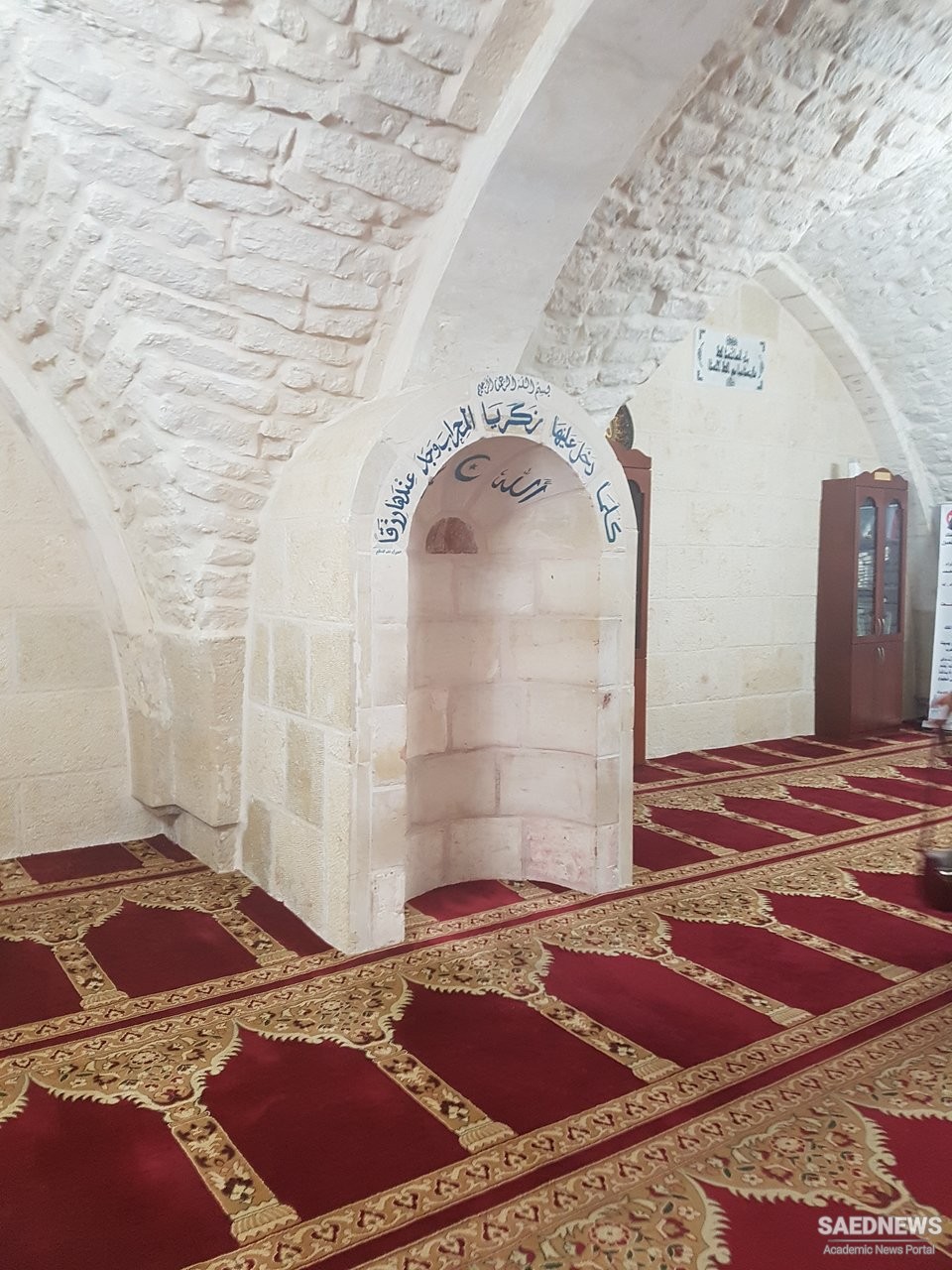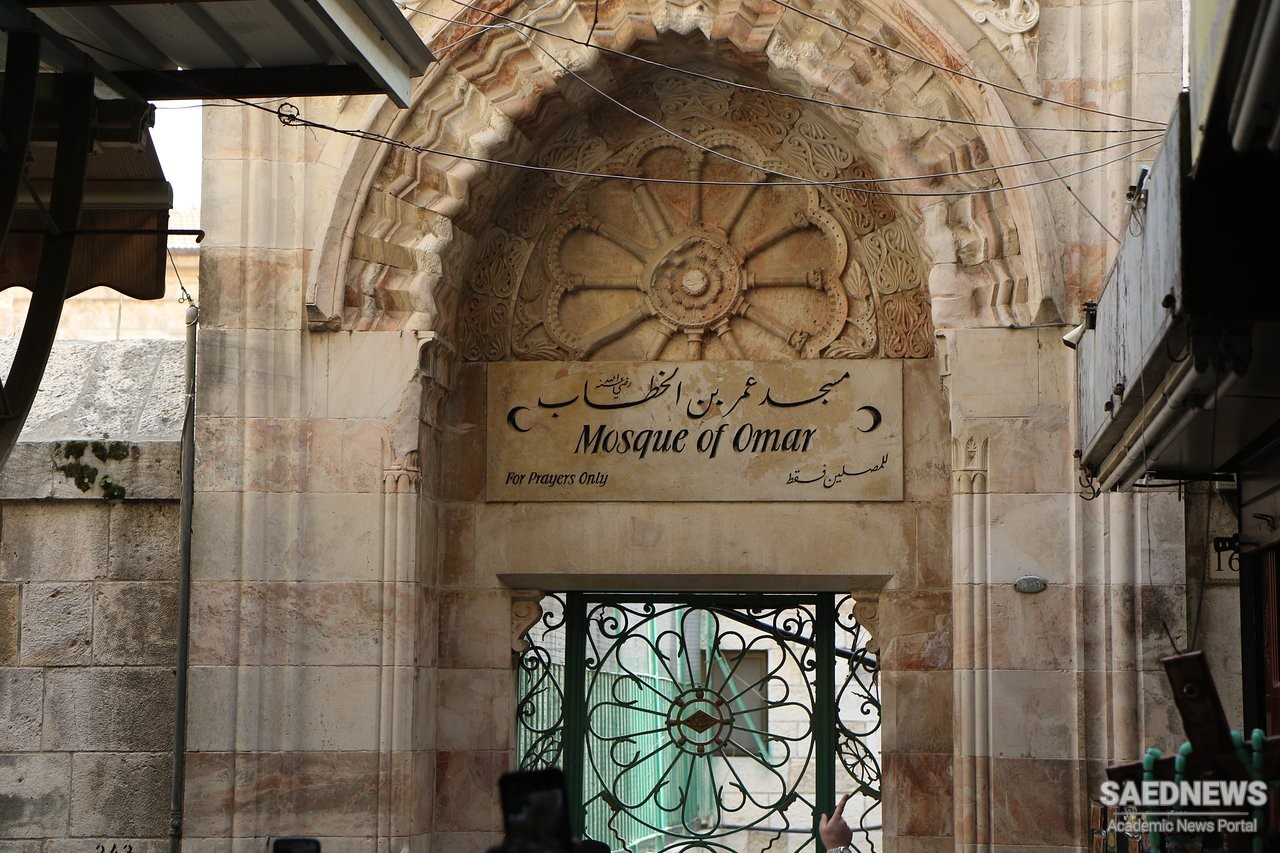The Patriarch of Jerusalem was showing Umar around the Church of the Holy Sepulchre during which the time for salah occurred. The Patriarch offered a place for him to pray in the church but Umar refused, explaining to the Patriarch, “Had I prayed inside the church, the Muslims coming after me would take possession of it, saying that I had prayed in it.” Tradition has it that he picked up a stone, threw it outside and prayed at the spot it landed. The present Mosque of Umar (or Masjid-e-Umar) was built over this place by Salahuddin Ayyubi’s son Afdhal Ali in 1193 CE. At the time when the Muslims first conquered Jerusalem, the Jews had long been banned from Jerusalem and the surrounding areas by the Christian rulers. Umar agreed with Sophronius (the Patriarch of Jerusalem) that the Jews would not be permitted to reside but later revoked this arrangement. Umar invited 70 Jewish families from Tiberias to settle in Jerusalem, allowing them to also build a synagogue. Several eminent Companions of the Prophet also settled in Jerusalem, drawn by the holiness of the city. Ubadah-bin-Samit, one of the leading experts in the Quran, became the first qadi (Islamic judge) of Jerusalem (Source: Islamic Landmarks).



 Tomb of Salman Farsi, Al Quds Al Sharif, Palestine
Tomb of Salman Farsi, Al Quds Al Sharif, Palestine














































